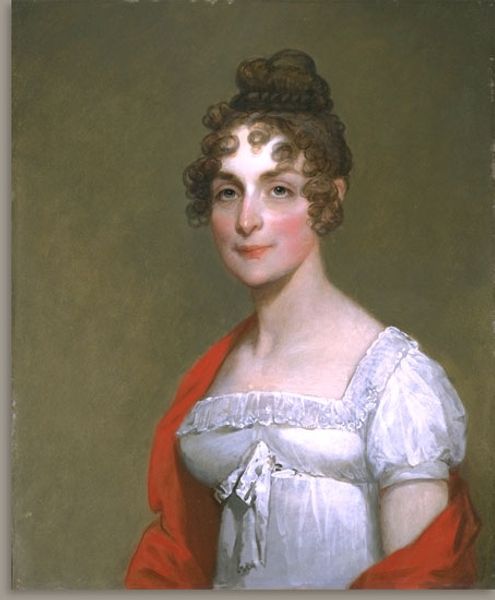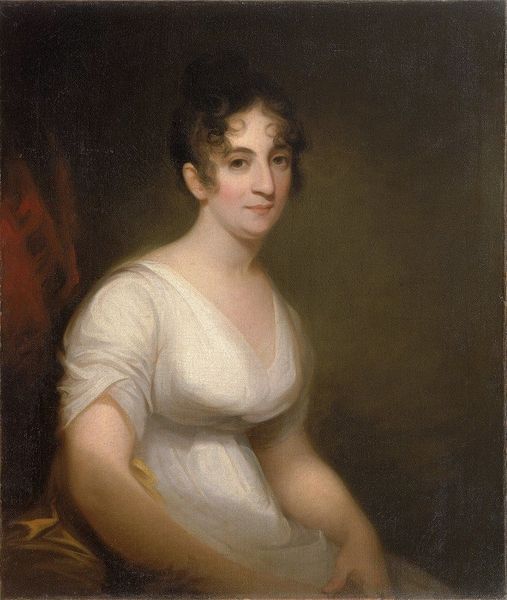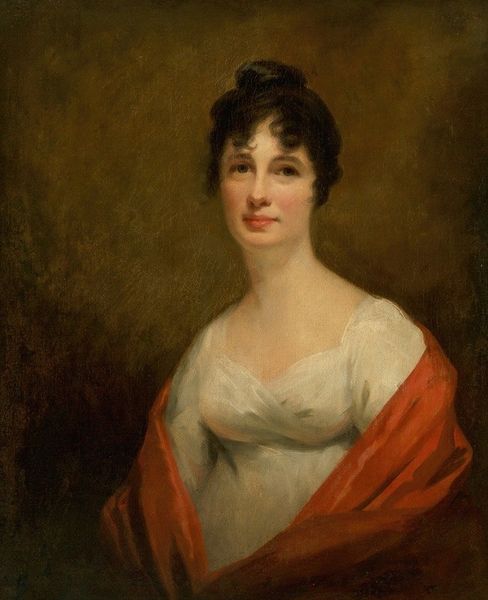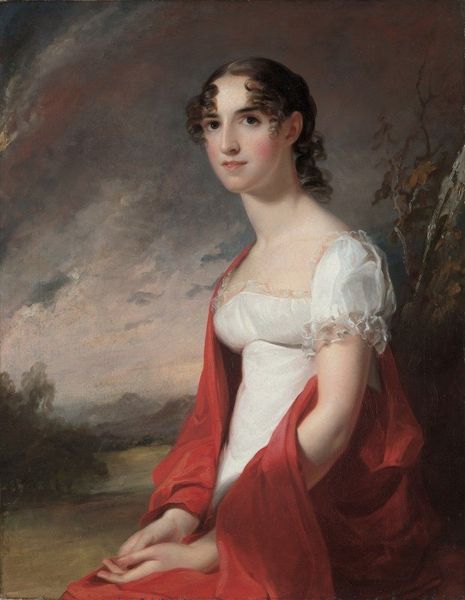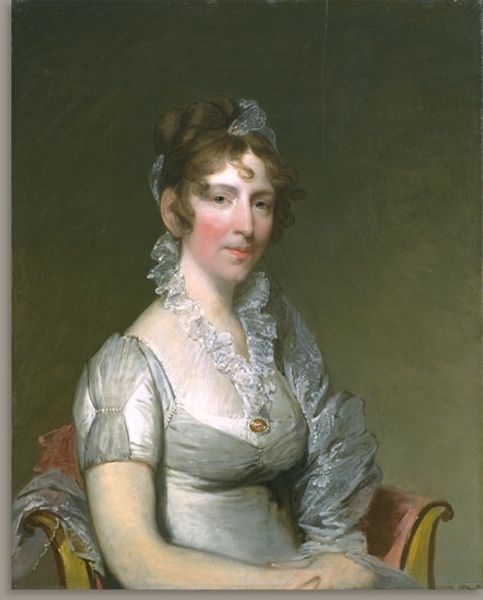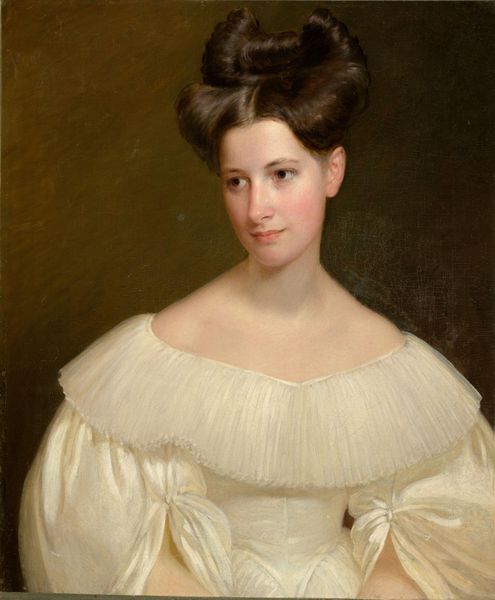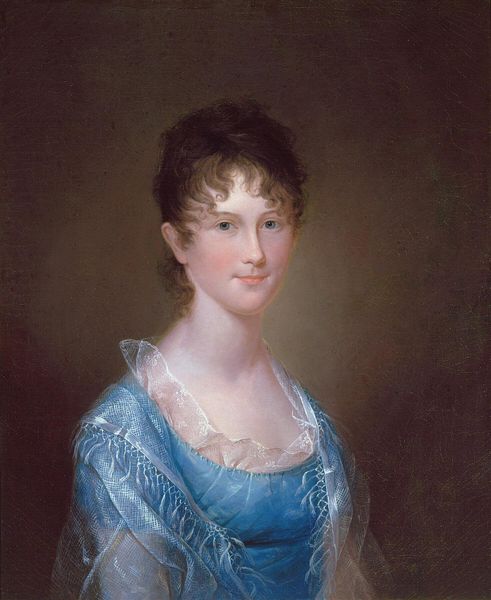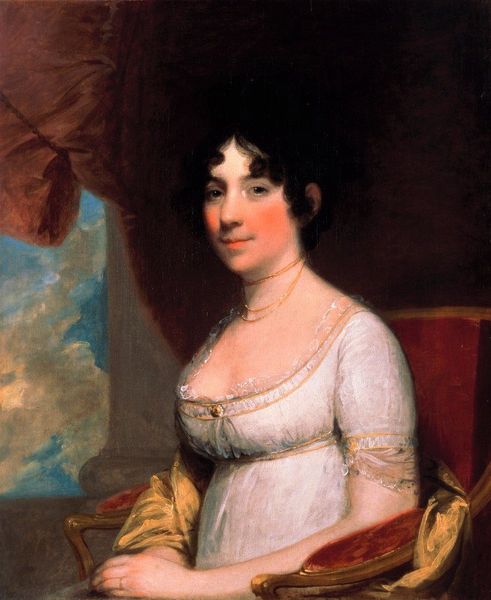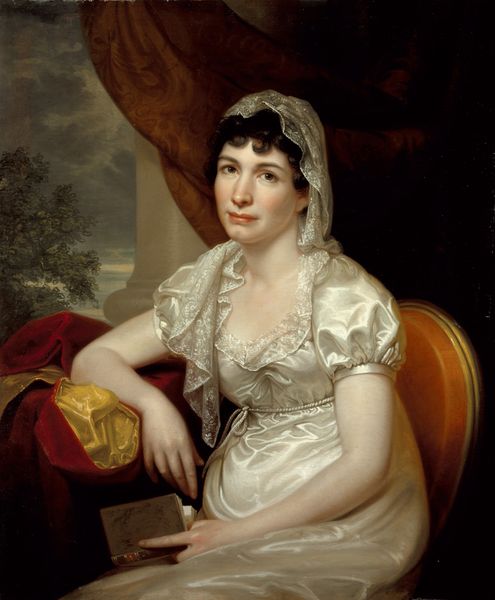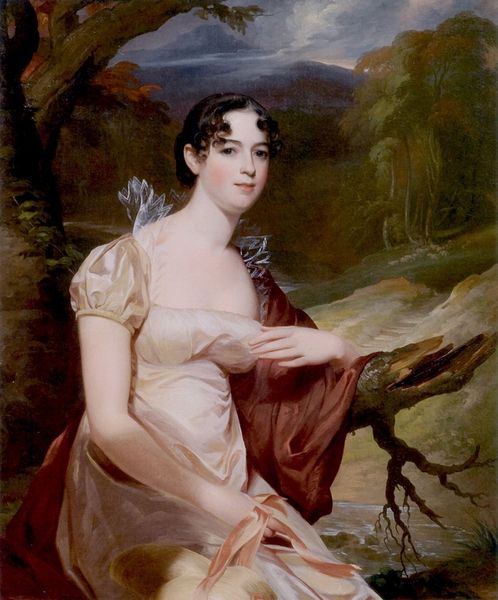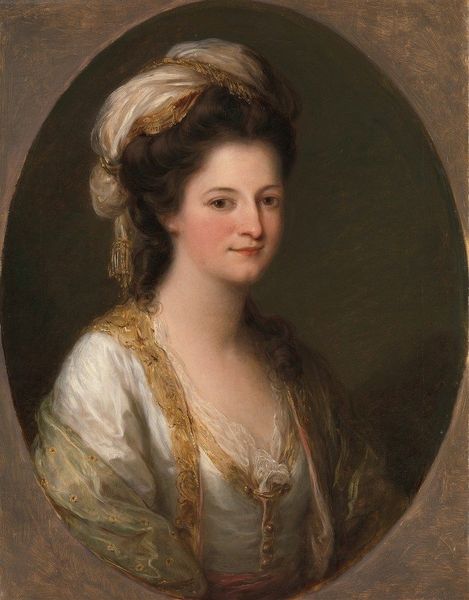
painting, oil-paint
#
portrait
#
painting
#
oil-paint
#
romanticism
#
academic-art
Copyright: Public domain
Editor: Here we have Henry Raeburn's "Portrait of Elizabeth Campbell, Marchesa Di Spineto," painted in 1812 using oil paints. I'm immediately struck by the intimacy of this portrait; the Marchesa seems both elegant and approachable. What particularly draws your eye when you look at this piece? Curator: For me, it’s how Raeburn manages to capture a certain… knowing. The light catches her eyes in a way that hints at stories untold, secrets whispered across drawing-rooms, maybe a scandal or two. Raeburn wasn't just painting a face; he was hinting at a life lived, a world inhabited. The slightly melancholic expression adds a touch of mystery. It feels almost as though she knows something we don't – don’t you think? Editor: I see what you mean! It's more than just a pretty face; there's a definite personality there. Does her pose, perhaps that casual drape of fabric, suggest something about her social standing at the time? Curator: Absolutely! Consider the context – the Napoleonic era, shifting social sands. The light and the fabric are strategically deployed. The gentle colours almost whisper something – a visual sonnet, perhaps? I wonder what she dreamed of, in her silk-rustling world. Editor: So, Raeburn’s capturing more than just a likeness. He’s giving us a glimpse into a particular life, shaped by its time. I hadn't quite picked up on that nuance initially! Curator: Precisely. It’s like catching a fleeting moment, a private thought made public. Editor: It's amazing how much history can be held in a single painted glance. It makes you wonder about all the stories hidden within other portraits, too. Curator: Indeed. Now, imagine writing that Marchesa’s biography...a rich tapestry woven from silk and scandal, sunlight and shadow...
Comments
No comments
Be the first to comment and join the conversation on the ultimate creative platform.
